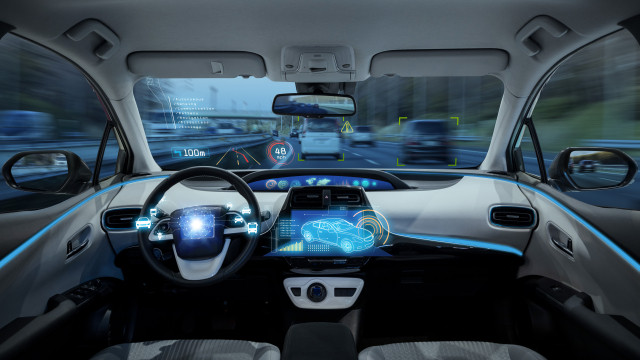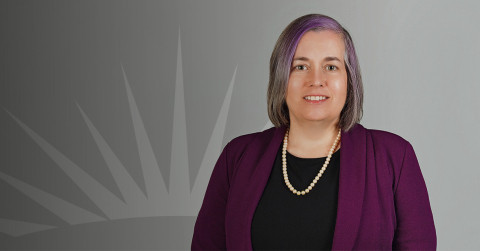
Autonomous Vehicles – A Revolutionary Look at Insurance
Our team of actuaries and students presented this topic at Pinnacle University (Pinnacle U) in March 2022.
A decade ago, autonomous vehicles (AVs) seemed like a futuristic gimmick, out of reach.
Today, however – although the word “autonomous” might suggest otherwise – most people drive some sort of AV. To clarify, industry leaders have categorized today’s AVs into six levels, numbered 0 to 5, for which 0 represents vehicles with no autonomy, and 5 represents fully autonomous vehicles with no driver needed.
In between Levels 0 and 5 are the vehicles likely sitting in an average U.S. citizen's driveway. These vehicles have some form of autonomy that can include cruise control, lane assist, blind-spot indicators, crash avoidance sensors and other conveniences.
With such broad criteria for autonomous vehicles, it is no surprise that the valuation of the AV market is $22.2 billion as of year-end 2021. It is a large market, and insurance plays a critical role.
Various rate filings, both for commercial and private passenger auto, give an idea of how autonomous vehicles are being priced with regard to insurance. Although rate filings do not exist for fully autonomous Level 5 vehicles, many filings offer discounts for having an autonomous feature attached to the vehicle.
This raises the question – would fully autonomous vehicles be even more cost-effective with regard to insurance?
Although rate filings today may indicate this, building a fully autonomous vehicle involves a great deal of complexity. Consequently, we can’t understand its possible cost-effectiveness until an AV is produced and widely available on public roads.
Additionally, build complexity isn’t the only obstacle when it comes to AVs. Some of the top concerns regarding AVs for customers and insurers are safety, liability, privacy and cybersecurity.
Most accidents are caused by human error, so an AV should theoretically decrease the number of accidents. However, there are some nuances. Some unavoidable accidents are said to be caused by human inability to make the safest decisions in a matter of a few seconds.
While AVs have crash algorithms intended to improve safety, these algorithms could turn accidents into a purposeful decision, which is challenging for insurers to cover. According to research done by Carney and Moore, the regular adoption of AVs will be a slow process, since the public expects machine algorithms to be perfect, and at least 90% safer than human drivers.
Liability is also increasingly complex for these vehicles, because with AVs, many different people aside from the drivers – the manufacturer, supplier, software operators, etc. – can be assigned blame. And since court decisions may require much more time and money to determine liability, the AV market may be further affected.
With regard to privacy, insurance companies need data to make their underwriting decisions and must adjust to using real-time data instead of historical information. Customers do not want their locations and geographic data to be tracked while in their car, because this could lead to identity theft and market harassment worry.
The final concern is cybersecurity. Socially, 73% of respondents claim that hacking threats are the top barrier preventing acceptance of AVs, according to Statista. Again, with a lack of historical data, insurers find it difficult to make accurate cybersecurity projections.
Fortunately, there are many solutions to these potential problems.
By following rules and regulations made by the National Highway Traffic Safety Administration, autonomous car companies can address or keep to a minimum most safety concerns.
To address liability concerns, much research has been done regarding liability in the event of AV accidents. In instances when a software issue causes an accident, the software provider may be liable. If an accident is caused by a problem with the actual car itself, the manufacturer may be liable. Identifying cause and splitting up the concerns can clarify liability questions.
Regarding privacy, it is crucial that customers’ locations and geographic data be left anonymous to prevent mitigate privacy concerns for the passengers.
To combat cybersecurity, systems should be regularly monitored and updated to ensure they are strong and can withstand a potential cyber-attack. Monitoring these systems will ensure that any issues will be identified and corrected through frequent updates.
As our society gears up to more prevalent Level 5 autonomy, the adaptation of AVs will be revolutionary. As with many revolutionary and industrial changes, some may at first feel apprehensive and uncertain about the unknown and unfamiliar. However, with careful research, identification of possible risks and development of mitigation strategies, all involved industries will adapt more easily – the insurance industry being no exception.
Kris Kresto is an actuarial analyst I with Pinnacle Actuarial Resources in the Chicago office. He holds Bachelor of Science degrees in actuarial science and statistics from the University of Illinois at Urbana-Champaign and has experience in assignments involving loss reserving, loss cost projections and group captives. He is actively pursuing membership in the Casualty Actuarial Society (CAS) through the examination process.
Ione Hoy is currently pursuing her Bachelor of Science degree in actuarial science at Concordia University in Wisconsin and will be graduating at the end of the spring semester in 2023. She is currently interning at Principal Financial Group.
Thomas Crivello is an actuarial analyst with Network Health in the Brookfield office. He holds a Bachelor of Science degree in actuarial science from Carroll University. He is actively pursuing membership in the Society of Actuaries (SOA) through the examination process.



